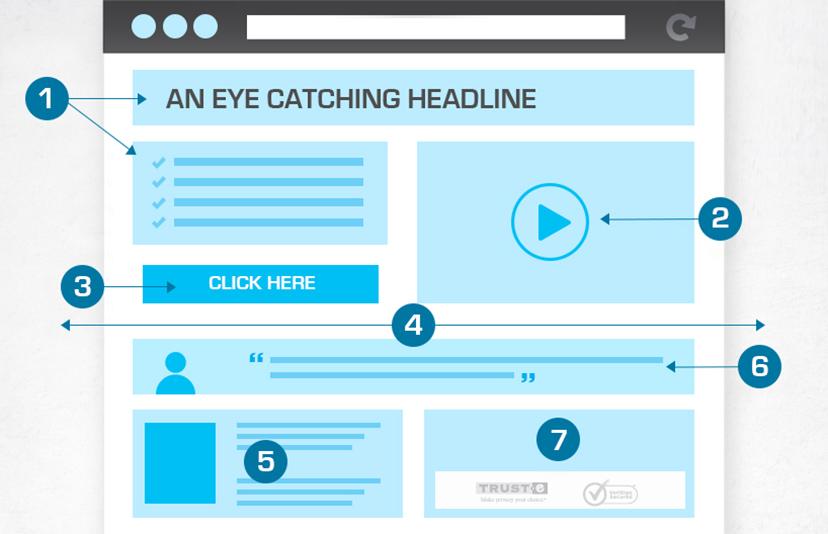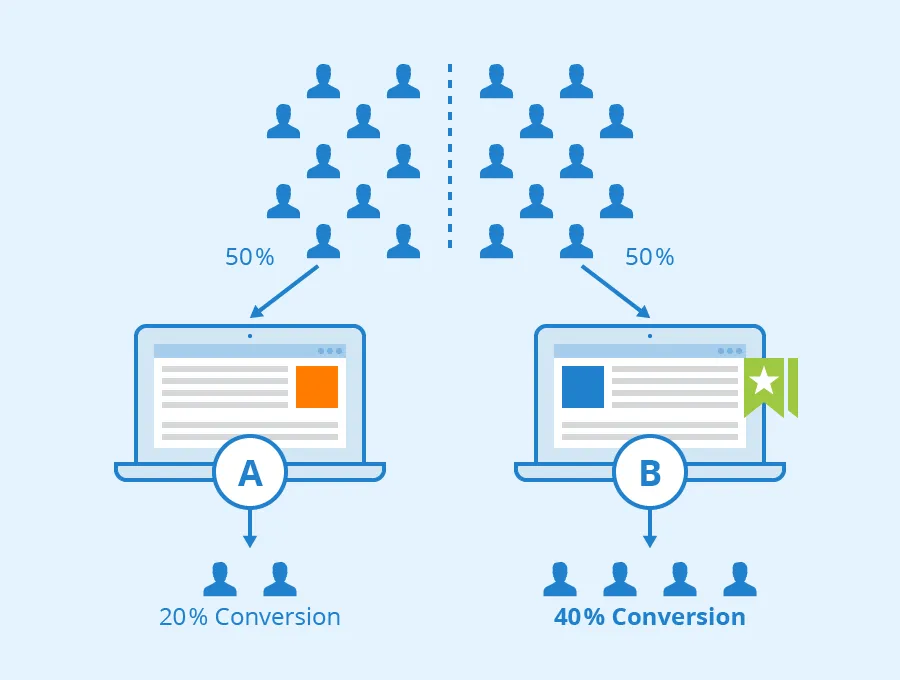
Building a high converting sales funnel is the cornerstone of turning traffic into revenue in today’s competitive digital landscape. Whether you’re an entrepreneur launching a startup, a marketer refining your strategy, or a business owner aiming to scale, a well-crafted funnel can transform prospects into loyal customers.
At High Converting Funnels, with over 17 years of performance marketing expertise, we’ve helped businesses worldwide master the funnel creation process to drive leads, boost sales, and maximize ROI. In this digital marketing funnel guide, we’ll walk you through the step-by-step funnel building process to create a high converting sales funnel from scratch in 2025. Packed with data, real-world examples, and actionable funnel building tips, this guide will empower you to achieve conversion rate improvement and sustainable growth.
Why a High Converting Sales Funnel Matters in 2025
A high converting sales funnel is more than a marketing tool—it’s a strategic system that guides prospects from awareness to purchase while optimizing every touchpoint. According to Salesforce, businesses with optimized funnels can increase conversions by up to 70%. Yet, many struggle with the funnel creation process, leading to low engagement and missed opportunities. In 2025, with rising ad costs and shorter attention spans, mastering sales funnel optimization is critical. This guide will break down the funnel strategy into actionable steps, ensuring your funnel delivers results. Let’s dive into the step-by-step funnel building process.
Step 1: Define Your Audience and Offer
Why It Matters
The foundation of a high converting sales funnel is a deep understanding of your audience and a compelling offer tailored to their needs. Without this, your lead generation funnel will attract the wrong prospects, leading to low conversions. In 2025, hyper-personalization is key—68% of consumers expect brands to understand their unique needs, per a 2024 Epsilon study.
How to Do It
- Research Your Audience: Use tools like Google Analytics, Facebook Audience Insights, or surveys to gather data on demographics, pain points, and buying behaviors. Create detailed buyer personas to guide your funnel strategy.
- Craft a Magnetic Offer: Your offer should solve a specific problem or deliver clear value. For example, a SaaS company might offer a “Free 14-Day Trial,” while a fitness coach could provide a “7-Day Weight Loss Plan.”
- Align Offer with Audience: Ensure your offer matches your audience’s stage in the buyer’s journey. Cold leads need educational content, while warm leads respond to trials or discounts.
Example: A B2B Digital Marketing client we worked with built a high converting sales funnel by offering a “Free Workflow Audit” to small businesses. This targeted offer aligned with their audience’s need for efficiency, driving a 6% conversion rate.
Step 2: Map Out Your Funnel Stages
Why It Matters
A high converting sales funnel is structured to guide prospects through distinct stages: Awareness, Interest, Decision, and Action (AIDA). Mapping these stages ensures a seamless funnel creation process and prevents leaks. HubSpot reports that businesses with clearly defined funnels see 18% higher revenue growth.
How to Do It
- Awareness Stage: Attract prospects with valuable content like blog posts, social media ads, or webinars. Use platforms like Google Ads or Facebook Ads to drive traffic.
- Interest Stage: Engage leads with lead magnets (e.g., eBooks, checklists) to capture contact information. Optimize landing pages for conversion rate improvement.
- Decision Stage: Nurture leads with email sequences, case studies, or demos to build trust and address objections.
- Action Stage: Drive conversions with strong CTAs, limited-time offers, or seamless checkout processes.
Pro Tip: Use a CRM like ActiveCampaign to track leads across stages and automate nurturing, ensuring no prospect falls through the cracks.
Example: An e-commerce client mapped their digital sales funnel to include a blog post (Awareness), a “Free Style Guide” lead magnet (Interest), a 5-email nurture sequence (Decision), and a 10% discount code (Action). This step-by-step funnel building approach boosted their conversion rate by 45%.
Step 3: Create High-Converting Landing Pages

Why It Matters
Landing pages are the heart of a high converting sales funnel, serving as the entry point for capturing leads or driving sales. A poorly designed landing page can sabotage your sales funnel optimization efforts. Unbounce data shows that optimized landing pages can achieve conversion rates up to 20% higher than generic pages.
How to Do It
- Focus on Clarity: Use a compelling headline, concise copy, and a single CTA to guide visitors. For example, “Get Your Free SEO Audit Today” is clear and actionable.
- Optimize for Speed: Google’s 2024 report states that 53% of mobile users abandon pages that take over three seconds to load. Use tools like PageSpeed Insights to improve performance.
- Mobile-First Design: With over 60% of traffic coming from mobile, ensure your landing page is responsive and user-friendly on all devices.
- Add Trust Signals: Include testimonials, trust badges, or client logos to build credibility and reduce friction.
Real-World Success: At High Converting Funnels, our proven funnel-building techniques include custom landing pages that prioritize speed, clarity, and trust. One client saw a 50% lift in conversions after we redesigned their landing page with a streamlined layout and customer reviews.
Step 4: Implement a Robust Lead Nurturing System
Why It Matters
Not all leads convert immediately, making nurturing a critical part of a high converting sales funnel. A strong follow-up system keeps your brand top-of-mind and builds trust. Salesforce reports that nurtured leads produce 50% more sales-ready prospects at a 33% lower cost.
How to Do It
- Email Marketing: Create automated email sequences using tools like Mailchimp or Klaviyo. Start with a welcome email, followed by educational content, and end with a compelling offer.
- Retargeting Ads: Use Google Ads or Facebook Ads to re-engage visitors who didn’t convert. Target high-intent pages like pricing or checkout.
- Personalization: Leverage dynamic content to tailor messages based on user behavior. For example, send cart abandonment emails with personalized product recommendations.
- Track Engagement: Monitor open rates, click-through rates, and conversions to refine your nurturing strategy.
Example: A coaching business we worked with implemented a 7-email sequence in their lead generation funnel, including a free webinar, client success stories, and a limited-time discount. This nurturing system increased their conversion rate from 2% to 7%.
Step 5: Test, Analyze, and Optimize

Why It Matters
A high converting sales funnel requires continuous sales funnel optimization to stay effective. Consumer behaviors, platforms, and trends evolve, and what works today may not work tomorrow. A 2024 Optimizely study found that businesses that regularly test their funnels see 30% higher conversion rates.
How to Do It
- Run A/B Tests: Test variations of headlines, CTAs, or page layouts using tools like Google Optimize or VWO. For example, test “Start Your Free Trial” vs. “Try It Free Today.”
- Analyze Data: Use Google Analytics, Hotjar, or Crazy Egg to track metrics like bounce rates, exit pages, and conversion funnels. Identify drop-off points and address them.
- Iterate Based on Insights: If data shows high bounce rates on a landing page, simplify the design or improve load times. If email open rates are low, refine subject lines.
- Stay Updated: In 2025, AI-driven personalization and video content are shaping funnels. Incorporate these trends to stay ahead.
Example: A SaaS client optimized their digital sales funnel by testing two CTA buttons. The winning version, “Get Started in 30 Seconds,” increased sign-ups by 28%. Regular testing ensured sustained conversion rate improvement.
Common Pitfalls to Avoid in the Funnel Creation Process
Building a high converting sales funnel isn’t without challenges. Here are three pitfalls to watch for:
- Overcomplicating the Funnel: A complex funnel with too many steps can overwhelm prospects. Keep it simple, focusing on one goal per stage.
- Ignoring Mobile Users: With mobile traffic dominating, a non-responsive funnel will tank conversions. Always test on multiple devices.
- Neglecting Follow-Up: Failing to nurture leads is a missed opportunity. A robust follow-up system is essential for sales funnel optimization.
Integrating Proven Funnel-Building Techniques
At High Converting Funnels, our proven funnel-building techniques combine data-driven targeting, optimized landing pages, and strategic nurturing to create high converting sales funnels. Whether you’re leveraging Google Ads, Facebook Ads, or email marketing, our step-by-step funnel building approach ensures every element is designed for conversion rate improvement. Partnering with experts like us can save you time and deliver measurable results, as we’ve done for clients across industries.
Tools to Supercharge Your Funnel Strategy
To streamline the funnel creation process, consider these tools:
- ClickFunnels or Leadpages: Build landing pages and funnels with drag-and-drop ease.
- ActiveCampaign or Mailchimp: Automate email nurturing for personalized follow-ups.
- Google Analytics and Hotjar: Track user behavior and identify optimization opportunities.
- Google Ads and Facebook Ads Manager: Drive targeted traffic to your lead generation funnel.
The Role of Content in a High Converting Sales Funnel
Content is the fuel that powers a high converting sales funnel. From blog posts to videos, every piece should align with your audience’s needs and funnel stage:
- Awareness: Create SEO-optimized blogs or social media posts to attract traffic.
- Interest: Offer lead magnets like eBooks or webinars to capture emails.
- Decision: Share case studies, demos, or FAQs to address objections.
- Action: Use persuasive copy in emails or checkout pages to seal the deal.
Example: A fitness brand we worked with used a blog post on “Top 10 Workout Mistakes” to drive traffic, a free “7-Day Meal Plan” as a lead magnet, and a video testimonial series to convert leads. This content-driven funnel strategy achieved a 5% conversion rate.
Scaling Your Funnel for Long-Term Success
Once your high converting sales funnel is live, scaling is the next step. Here’s how:
- Increase Traffic: Invest in paid ads or SEO to drive more qualified visitors.
- Expand Offers: Introduce upsells, cross-sells, or subscription models to boost revenue.
- Automate Processes: Use Zapier or CRM integrations to streamline lead management.
- Monitor KPIs: Track metrics like cost per acquisition (CPA) and customer lifetime value (CLV) to ensure profitability.
Conclusion
Building a high converting sales funnel from scratch in 2025 is a game-changer for businesses looking to drive leads, boost sales, and scale sustainably. By defining your audience, mapping funnel stages, creating optimized landing pages, nurturing leads, and continuously testing, you can achieve conversion rate improvement and unlock your business’s full potential. The funnel creation process may seem daunting, but with the right funnel strategy and tools, success is within reach.
Ready to take your funnel to the next level? Contact High Converting Funnels at hi@highconvertingfunnels.com or +91 9743015803 to leverage our proven funnel-building techniques for unparalleled results.
FAQs
1. What is a high converting sales funnel, and why is it important?
A high converting sales funnel is a structured process that guides prospects from awareness to purchase with optimized touchpoints. It’s critical because it maximizes conversions, reduces wasted ad spend, and drives sustainable revenue growth.
2. How long does it take to build a high converting sales funnel from scratch?
The funnel creation process can take 2-6 weeks, depending on complexity. Simple funnels (e.g., lead magnets to email nurturing) can be built faster, while advanced funnels with multiple stages require more time for testing and optimization.
3. What are the best tools for step-by-step funnel building?
Popular tools include ClickFunnels or Leadpages for landing pages, ActiveCampaign or Mailchimp for email nurturing, and Google Analytics or Hotjar for tracking performance. These streamline sales funnel optimization.
4. How can I ensure my digital sales funnel is mobile-friendly?
Test your funnel on multiple devices, use responsive design templates, and optimize for speed with tools like Google PageSpeed Insights. Mobile-friendliness is crucial for conversion rate improvement, as over 60% of traffic is mobile.
5. What’s the biggest mistake to avoid in the funnel creation process?
The biggest mistake is targeting the wrong audience, which leads to low conversions. Conduct thorough audience research and align your offer with their needs to build a high converting sales funnel.



